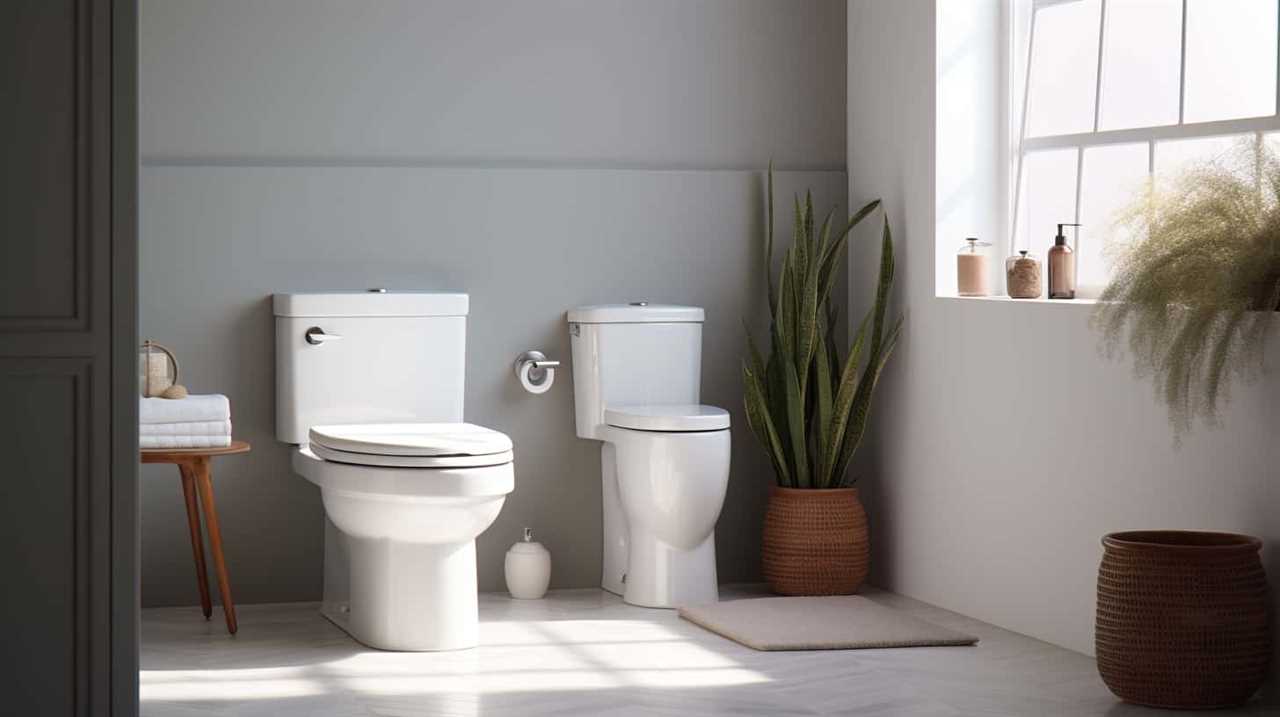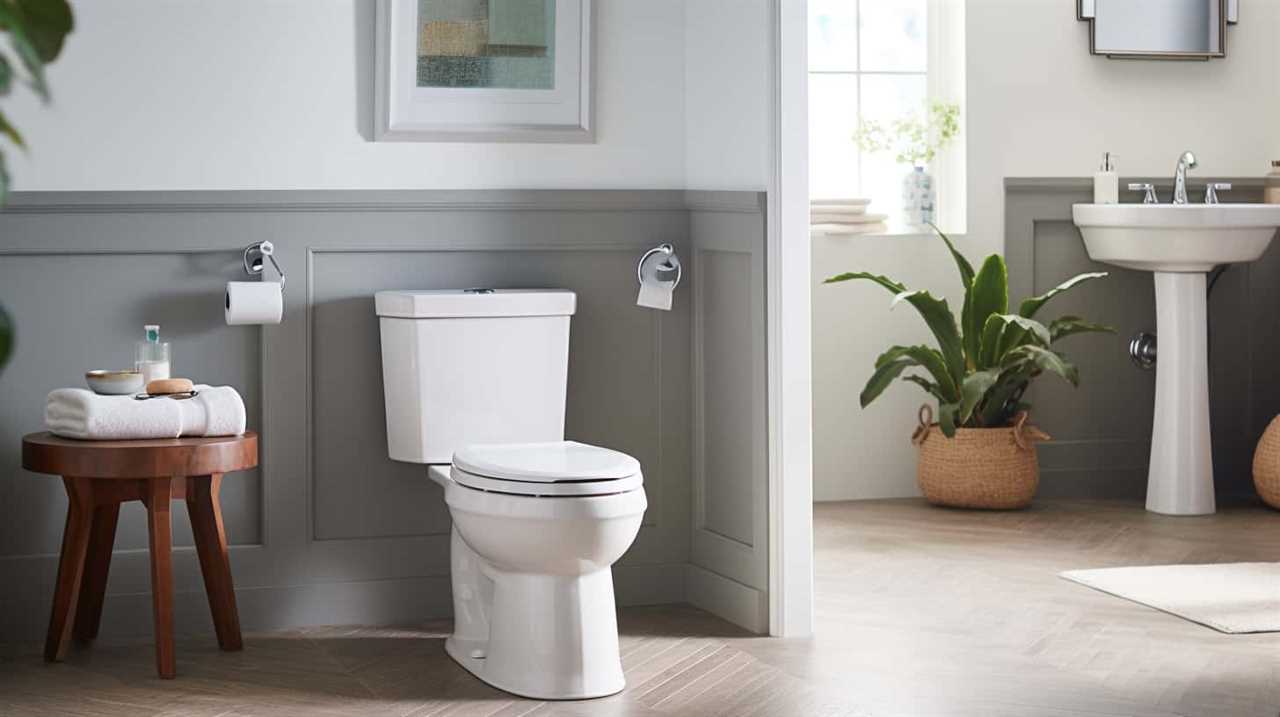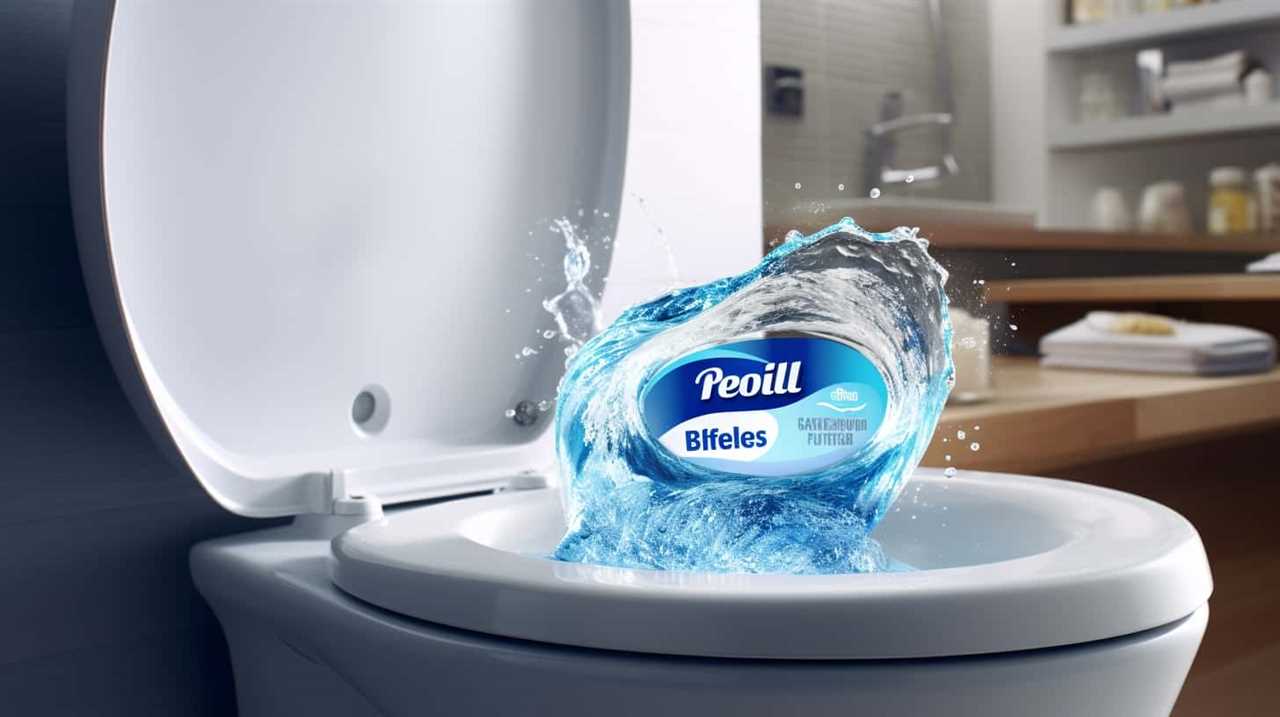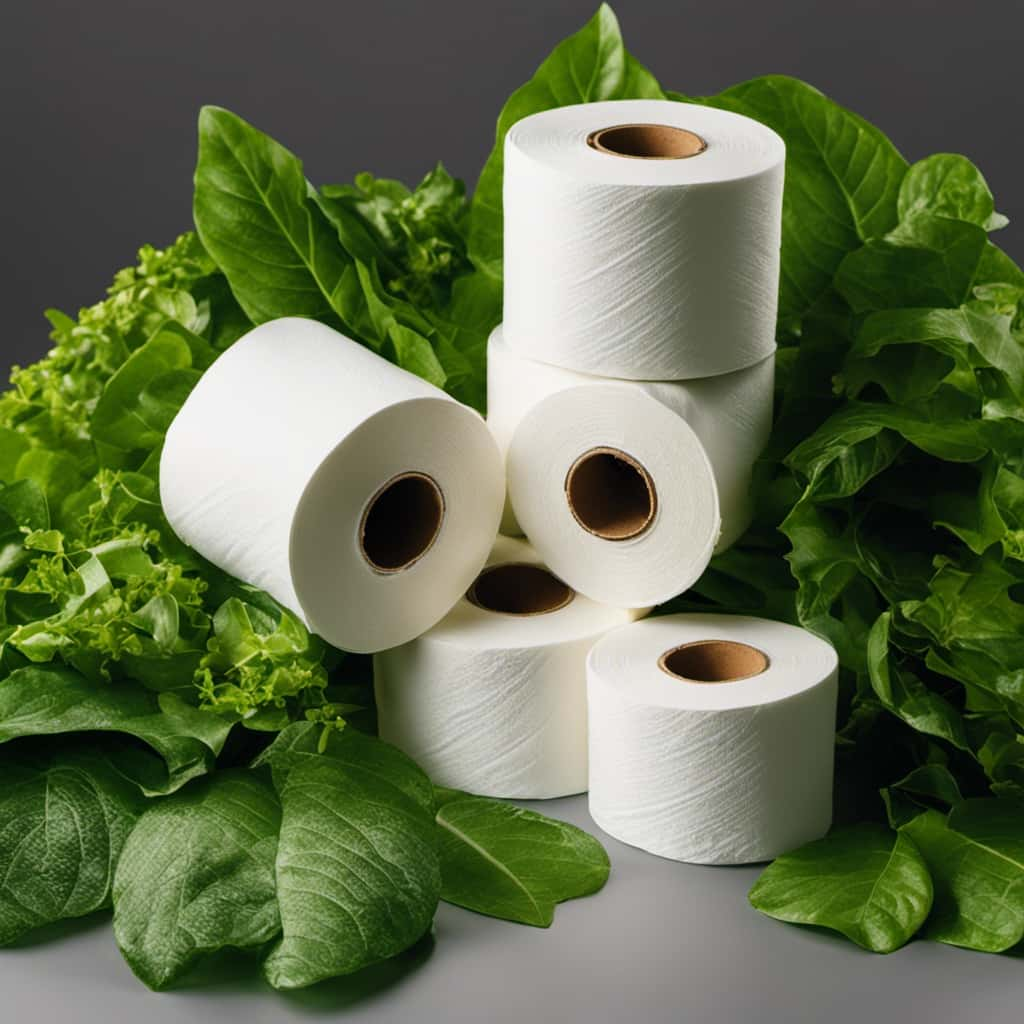We, the experts in toilet operation, offer you the key elements needed for a perfect flush.
Prepare to be enlightened by our comprehensive guide to toilet flush parts. From the resilient flapper to the powerful flush valve, each component plays a crucial role in ensuring a seamless flushing experience.
The fill valve replenishes water swiftly, while the overflow tube prevents any messy mishaps. And let us not forget the trusty trip lever, the commander of the flushing operation.
Join us on this journey to master the inner workings of your porcelain throne.

Key Takeaways
- Regular inspection and replacement of toilet flush parts is necessary for proper functioning.
- The flush valve, fill valve, flapper, overflow tube, and trip lever are essential components of the toilet flush mechanism.
- Troubleshooting and maintaining the trip lever involves checking for loose or broken parts, ensuring proper alignment, and testing its functionality.
- Proper alignment of the trip lever is important for efficient flushing and preventing water leakage from the tank.
Flapper
The flapper, which is a small rubber seal, is a crucial component of the toilet flush mechanism. It’s responsible for controlling the flow of water from the tank to the bowl during the flushing process. When the toilet isn’t in use, the flapper sits on top of the flush valve, creating a tight seal to prevent water from leaking into the bowl.
However, over time, common flapper problems can arise. One such problem is a worn-out flapper, which can lead to water continuously running into the bowl. Another issue is a misaligned or improperly installed flapper, which can cause incomplete flushing or water leakage.
It’s important to regularly inspect and replace the flapper to ensure proper functioning of the toilet flush mechanism and avoid these common problems.
Flush Valve
An important component of the toilet flush mechanism is the flush valve. It’s responsible for regulating the flow of water from the tank into the bowl during a flush. Understanding how to properly maintain and troubleshoot common flush valve problems is essential for maintaining a functional toilet.

Here are three key points to consider regarding flush valve maintenance:
- Regular inspection: Inspect the flush valve for any signs of wear, such as cracks or leaks. Replace the valve if necessary to prevent water wastage.
- Cleaning: Over time, mineral deposits and debris can accumulate on the flush valve, affecting its performance. Regularly clean the valve using a mild cleaner and a soft brush to ensure optimal functioning.
- Adjusting the chain: The chain connecting the flush valve to the handle can sometimes become loose or tangled, causing insufficient flushing. Adjust the chain length to ensure a proper seal and efficient flushing.
Fill Valve
Now let’s move on to the fill valve, another crucial component of the toilet flush mechanism responsible for controlling the water level in the tank. The toilet fill valve, also known as the ballcock, is an essential part that regulates the water flow into the tank after each flush. It ensures that the tank refills to the appropriate level, ready for the next use. When the flush lever is pressed, the fill valve opens, allowing water to enter the tank. Once the water reaches the desired level, the fill valve shuts off, preventing any overflow.
Here is a table summarizing the key features and functions of the toilet fill valve:
| Feature | Description |
|---|---|
| Function | Controls water level in the toilet tank |
| Types | Float-cup, float-ball, and diaphragm |
| Common issues | Slow filling, noisy operation, continuous running |
| How to fix | Adjust valve settings, clean or replace faulty components |
Understanding the role of the toilet fill valve and how to fix a faulty fill valve is essential for maintaining a properly functioning toilet. Now, let’s delve into the next component: the overflow tube.

Overflow Tube
Let’s explore the role of the overflow tube in the toilet flush mechanism.
The overflow tube is an essential component that helps regulate the water level in the toilet tank and prevent overflowing.
Here are three key points to understand about overflow tube maintenance and troubleshooting common issues:
- Proper water level: The overflow tube ensures that the water level in the tank doesn’t exceed a certain point. If you notice water constantly flowing into the overflow tube, it could indicate a problem with the fill valve or a worn-out flapper that needs replacement.
- Cleaning and inspection: Regular maintenance of the overflow tube involves cleaning any debris or mineral buildup that may obstruct the water flow. Inspect the tube for cracks or damage that can cause leakages.
- Adjusting water level: If the water level in the tank is too high or too low, you can adjust it by manipulating the height of the overflow tube. Ensure it’s positioned correctly to prevent water wastage or inadequate flushing.
Trip Lever
One important component of the toilet flush mechanism is the trip lever, which allows us to initiate the flushing process with a simple push or pull. The trip lever is typically located on the side of the toilet tank and is connected to the flush valve or flapper. When the trip lever is pressed, it activates the flush valve, allowing water to flow from the tank into the bowl, resulting in a powerful flush.

To install a trip lever, start by removing the tank lid and locating the mounting holes on the side of the tank. Insert the trip lever into the mounting holes, making sure it’s securely attached. Adjust the chain or rod connecting the trip lever to the flush valve or flapper, ensuring proper alignment and tension.
If you’re experiencing issues with your trip lever, troubleshooting may be necessary. Check for any loose or broken parts and tighten or replace as needed. Ensure that the trip lever is properly aligned with the flush valve or flapper to allow for smooth operation. If the trip lever isn’t activating the flush valve, it may need to be adjusted or replaced.
Frequently Asked Questions
How Do I Know if My Toilet’s Flapper Needs to Be Replaced?
If your toilet is constantly running or doesn’t flush properly, these are signs of a faulty flapper. To replace it, first, turn off the water supply, remove the old flapper, and install a new one.
What Is the Purpose of the Flush Valve in a Toilet?
The flush valve is essential for proper toilet functioning. It controls the release of water from the tank to create a strong flush. There are different types like the flapper valve and the canister valve.

How Can I Fix a Fill Valve That Keeps Running Even After the Tank Is Full?
To fix a fill valve that keeps running after the tank is full, we need to troubleshoot the toilet flush. Start by checking the water level, adjusting the float, and cleaning or replacing the fill valve if necessary.
Why Is the Overflow Tube Important in a Toilet?
The overflow tube is crucial in maintaining the water level in a toilet. It ensures that excess water flows into the bowl instead of overflowing onto the floor. Regular maintenance of the tube is important for proper functioning.
How Do I Adjust the Trip Lever on My Toilet to Ensure a Proper Flush?
To ensure a proper flush, we adjust the trip lever on our toilets. Troubleshooting the flush can be done by carefully adjusting the lever. It is important to understand the mechanism and make precise adjustments for optimal performance.
Conclusion
In conclusion, understanding the various components of a toilet flush is crucial for maintaining a functional and efficient bathroom fixture.

From the flapper that controls the water release to the flush valve that regulates the flow, each part plays a vital role in the flushing process.
Whether it’s the fill valve that replenishes the tank or the overflow tube that prevents water damage, every element contributes to a seamless flushing experience.
So, next time you use the toilet, appreciate the intricate mechanisms that make it all possible.










